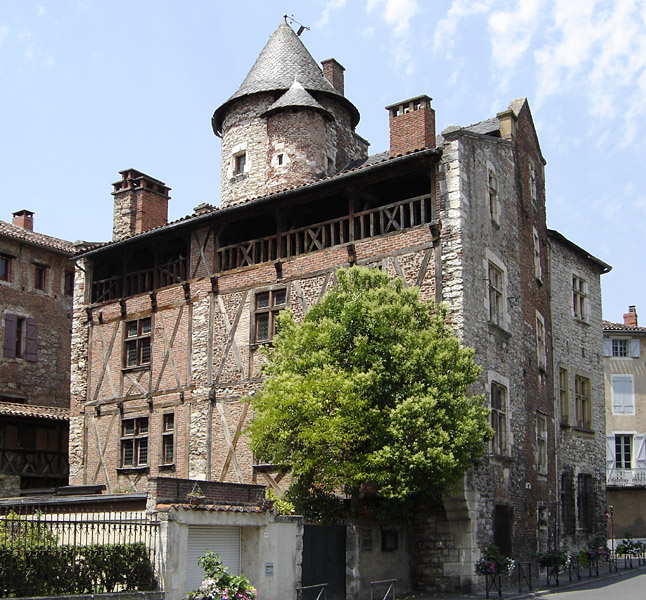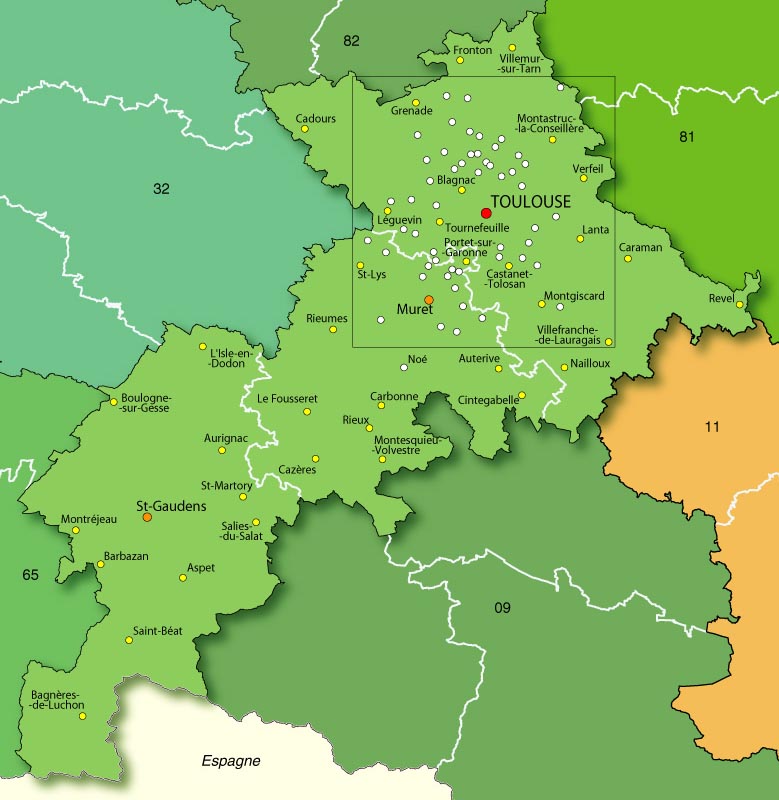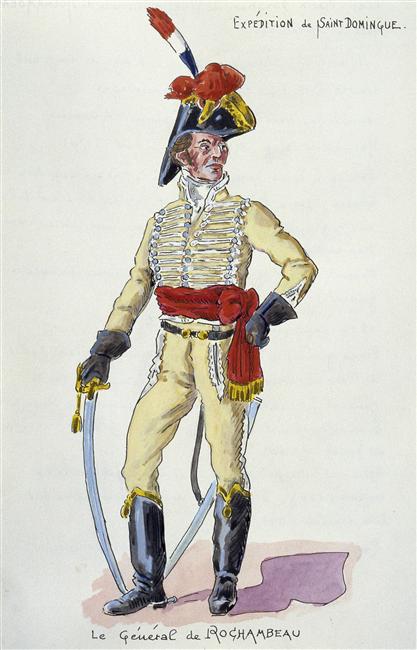|
Jean-Pierre Ramel (the Younger)
Jean-Pierre Ramel (the younger) (1768 in Cahors – 15 August 1815 in Toulouse) was a French general during the French Revolutionary Wars and the First French Empire. Following the defeat of Napoleon I, he was assassinated by royalists in Toulouse during the Second White Terror. His older brother, Jean-Pierre Ramel (the elder), born in 1761, had been a deputy of the French Parliament and had worked on the Constitution. Biography Ramel entered a French infantry regiment as a volunteer at the age of fifteen. In 1791 he became adjutant-major in the Legion of Lot. In 1792 he was promoted to captain and the next year he became a battalion commander. After being imprisoned, he obtained his liberty due to the efforts of General Dugommier and in 1796 he was promoted to adjutant-general in the army of the Rhin-et-Moselle. Charged with the defense of Kehl he successfully repulsed the attack of the Archduke Charles. Promotion to commander and capture The same year he was made commander o ... [...More Info...] [...Related Items...] OR: [Wikipedia] [Google] [Baidu] |
Cahors
Cahors (; oc, Caors ) is a commune in the western part of Southern France. It is the smallest prefecture among the 13 departments that constitute the Occitanie Region. The main city of the Lot department and the historical center of the Quercy, Cahors is home to 19,878 ''cadurciennes'' and ''cadurciens''. Nestled in a meander of the Lot and surrounded by steep arid limestone hills, this historic city is home to a great monumental diversity, mainly inherited from Roman times and the Middle Ages; the city's monuments include a historic city centre, Saint-Étienne cathedral, Roman walls and the famous Valentré bridge (a UNESCO World Heritage Site as part of the pilgrimage path to Santiago de Compostela). Famed for its wine and gastronomy (truffles and foie gras), this southern French city holds the label of the French Towns of Art and History. The Cadurcian economy is reliant on tertiary services and makes Cahors the Lot's economic centre. History Cahors has had a rich hi ... [...More Info...] [...Related Items...] OR: [Wikipedia] [Google] [Baidu] |
French Guiana
French Guiana ( or ; french: link=no, Guyane ; gcr, label=French Guianese Creole, Lagwiyann ) is an overseas departments and regions of France, overseas department/region and single territorial collectivity of France on the northern Atlantic Ocean, Atlantic coast of South America in the Guianas. It borders Brazil to the east and south and Suriname to the west. With a land area of , French Guiana is the second-largest Regions of France, region of France (more than one-seventh the size of Metropolitan France) and the largest Special member state territories and the European Union, outermost region within the European Union. It has a very low population density, with only . (Its population is less than that of Metropolitan France.) Half of its 294,436 inhabitants in 2022 lived in the metropolitan area of Cayenne, its Prefectures in France, capital. 98.9% of the land territory of French Guiana is covered by forests, a large part of which is Old-growth forest, primeval Tropical r ... [...More Info...] [...Related Items...] OR: [Wikipedia] [Google] [Baidu] |
Napoleon Bonaparte
Napoleon Bonaparte ; it, Napoleone Bonaparte, ; co, Napulione Buonaparte. (born Napoleone Buonaparte; 15 August 1769 – 5 May 1821), later known by his regnal name Napoleon I, was a French military commander and political leader who rose to prominence during the French Revolution and led Military career of Napoleon Bonaparte, successful campaigns during the French Revolutionary Wars, Revolutionary Wars. He was the ''de facto'' leader of the First French Republic, French Republic as First Consul from 1799 to 1804, then Emperor of the French from 1804 until 1814 and again in Hundred Days, 1815. Napoleon's political and cultural legacy endures to this day, as a highly celebrated and controversial leader. He initiated many liberal reforms that have persisted in society, and is considered one of the greatest military commanders in history. His wars and campaigns are studied by militaries all over the world. Between three and six million civilians and soldiers Napoleonic Wa ... [...More Info...] [...Related Items...] OR: [Wikipedia] [Google] [Baidu] |
Haute-Garonne
Haute-Garonne (; oc, Nauta Garona, ; en, Upper Garonne) is a department in the Occitanie region of Southwestern France. Named after the river Garonne, which flows through the department. Its prefecture and main city is Toulouse, the country's fourth-largest. In 2019, it had a population of 1,400,039.Populations légales 2019: 31 Haute-Garonne INSEE History Haute-Garonne is one of the original 83 departments created during the on 4 March 1790. It was created from part of the former provinces of an ...[...More Info...] [...Related Items...] OR: [Wikipedia] [Google] [Baidu] |
Order Of Saint Louis
The Royal and Military Order of Saint Louis (french: Ordre Royal et Militaire de Saint-Louis) is a dynastic order of chivalry founded 5 April 1693 by King Louis XIV, named after Saint Louis (King Louis IX of France). It was intended as a reward for exceptional officers, notable as the first decoration that could be granted to non-nobles. By the authorities of the French Republic, it is considered a predecessor of the Legion of Honour, with which it shares the red ribbon (though the Legion of Honour is awarded to military personnel and civilians alike). Although officially abolished by the government authorities of the July Revolution in 1830 following the French Revolution, its activities carried on as a dynastic order of the formerly sovereign royal family. As such, it is still recognised by the International Commission on Orders of Chivalry. Members The King was the Grand Master of the order, and the Dauphin was automatically a member as well. The Order had three classes: ... [...More Info...] [...Related Items...] OR: [Wikipedia] [Google] [Baidu] |
Maréchal De Camp
''Maréchal de camp'' (sometimes incorrectly translated as field marshal) was a general officer rank used by the French Army until 1848. The rank originated from the older rank of sergeant major general ( French: ''sergent-major général''). Sergeant major general was third in command in an army, after the general and the lieutenant general. One of his tasks was to dispose the troops on the battlefield. It was also known in the French army as the "battle sergeant" (fr: ''sergent de bataille''). In English-speaking countries, the rank of sergeant major general became known as simply major general. Background and history The ''maréchal de camp'' rank was the junior of the two officer general ranks of the French Army, the senior being lieutenant general. The rank of brigadier was intermediate between those of colonel and ''maréchal de camp'', but was not considered a general officer rank. Nevertheless, when rank insignia were introduced in the 1770s, the brigadier insignia was on ... [...More Info...] [...Related Items...] OR: [Wikipedia] [Google] [Baidu] |
Bourbon Restoration In France
The Bourbon Restoration was the period of French history during which the House of Bourbon returned to power after the first fall of Napoleon on 3 May 1814. Briefly interrupted by the Hundred Days War in 1815, the Restoration lasted until the July Revolution of 26 July 1830. Louis XVIII and Charles X, brothers of the executed king Louis XVI, successively mounted the throne and instituted a conservative government intended to restore the proprieties, if not all the institutions, of the Ancien Régime. Exiled supporters of the monarchy returned to France but were unable to reverse most of the changes made by the French Revolution. Exhausted by decades of war, the nation experienced a period of internal and external peace, stable economic prosperity and the preliminaries of industrialization. Background Following the French Revolution (1789–1799), Napoleon Bonaparte became ruler of France. After years of expansion of his French Empire by successive military victories, a coaliti ... [...More Info...] [...Related Items...] OR: [Wikipedia] [Google] [Baidu] |
Astorga, Spain
Astorga () is a municipality and city of Spain located in the central area of the province of León, in the autonomous community of Castilla y León, southwest of the provincial capital. It is located in the transit between the Páramo Leonés and the mountains of León and acts as the backbone of the comarcas of Maragatería, La Cepeda and the Ribera del Órbigo. The city is the head of one of the most extensive and oldest dioceses of Spain, whose jurisdiction covers half of the province of León and part of Ourense and Zamora. It is also head of the judicial party number 5 of the province of León. Astorga lies in the area of the Maragatos, a small ethnic and cultural community with distinctive customs and architecture. The town lies at the junction of the French route, the most popular path and Vía de la Plata route, an alternative path of the Way of St. James ( es, Camino de Santiago). Saint Turibius of Astorga was bishop of the city in the 5th century. History ... [...More Info...] [...Related Items...] OR: [Wikipedia] [Google] [Baidu] |
Siege Of Astorga
The siege of Astorga was an attempt by French forces to capture Astorga, Spain in a campaign of the Peninsular War. Astorga was located on the flank of the French invasion of Spain and Portugal, and was meant to be used as a headquarters during the campaign. For several weeks no attack took place, as neither side had artillery enough to fight well. Shortly after the French guns arrived, however, a hole was made in the wall and the city fell shortly thereafter. The French overpowered the Spanish garrison inside and took the city on April 20, 1810; with a loss of 160 men. Location Astorga is located in the province of León, in northwest Spain. Because of its location, it sat on the flank of the French army as they advanced into Spain, and then invaded Portugal. The city was built into a hill, part of the Manzanal mountains; and therefore was provided with natural defenses. The French had already been defeated once trying to take the city, in September 1809, after which Gene ... [...More Info...] [...Related Items...] OR: [Wikipedia] [Google] [Baidu] |
Gendarmerie
Wrong info! --> A gendarmerie () is a military force with law enforcement duties among the civilian population. The term ''gendarme'' () is derived from the medieval French expression ', which translates to " men-at-arms" (literally, "armed people"). In France and some Francophone nations, the gendarmerie is a branch of the armed forces that is responsible for internal security in parts of the territory (primarily in rural areas and small towns in the case of France), with additional duties as military police for the armed forces. It was introduced to several other Western European countries during the Napoleonic conquests. In the mid-twentieth century, a number of former French mandates and colonial possessions (such as Lebanon, Syria, the Ivory Coast and the Republic of the Congo) adopted a gendarmerie after independence. A similar concept exists in Eastern Europe in the form of Internal Troops, which are present in many countries of the former Soviet Union and its ... [...More Info...] [...Related Items...] OR: [Wikipedia] [Google] [Baidu] |
Donatien-Marie-Joseph De Vimeur, Vicomte De Rochambeau
Donatien-Marie-Joseph de Vimeur, vicomte de Rochambeau (7 April 1755 – 20 October 1813) was a French military commander. He was the son of Jean-Baptiste Donatien de Vimeur, comte de Rochambeau. Biography He served in the American Revolutionary War as an '' aide-de-camp'' to his father, spending the winter of 1781–1782 in quarters at Williamsburg, Virginia. In the 1790s, he participated in an unsuccessful campaign to re-establish French authority in Martinique and Saint-Domingue. Rochambeau was later assigned to the French Revolutionary Army in the Italian Peninsula, and was appointed to the military command of the Ligurian Republic. In 1802, he was appointed to lead an expeditionary force against Saint-Domingue (Haiti) after General Charles Leclerc's death. His remit was to restore French control of their rebellious colony, by any means. Historians of the Haitian Revolution credit his brutal tactics for uniting black and ''gens de couleur'' soldiers against the French. A ... [...More Info...] [...Related Items...] OR: [Wikipedia] [Google] [Baidu] |
Saint-Domingue
Saint-Domingue () was a French colony in the western portion of the Caribbean island of Hispaniola, in the area of modern-day Haiti, from 1659 to 1804. The name derives from the Spanish main city in the island, Santo Domingo, which came to refer specifically to the Spanish-held Captaincy General of Santo Domingo, now the Dominican Republic. The borders between the two were fluid and changed over time until they were finally solidified in the Dominican War of Independence in 1844. The French had established themselves on the western portion of the islands of Hispaniola and Tortuga by 1659. In the Treaty of Ryswick of 1697, Spain formally recognized French control of Tortuga Island and the western third of the island of Hispaniola. In 1791, slaves and some Dominican Creoles took part in the Vodou ceremony Bois Caïman and planned the Haitian Revolution. The slave rebellion later allied with Republican French forces following the abolition of slavery in the colony in 1793, althoug ... [...More Info...] [...Related Items...] OR: [Wikipedia] [Google] [Baidu] |






